



There’s something disturbing about the Super Sonico anime TV series. And I don’t mean that in a sensationalist, link-baiting way, but in a genuine discomfiting way that is at odds with the high-fructose aesthetics and heart-warming stories. It’s more intrinsic and hints at what the TV anime is representative of.
a cat-loving, college-attending, band-fronting wonder child
Sonico as a character - the busty, pink haired, headphone wearing poster child of the series - started life as a mascot character for the company Nitroplus (often stylised as Nitro+) way back in 2006. The quintessential image of a doe-eyed anime character with pneumatic breasts and a disregard for clothing rippled across image boards and if you were to do a search for the character on more or less any representative image silo today (workplace readers duly warned) then you could be mistaken for believing Sonico is just another hormone fuelled fantasy catering to the broad headphone fetish. Indeed, in the anime series she is never seen without her gargantuan and unwieldy headphones, going so far as to wearing them in a hotspring or in flashbacks to her childhood.
Read the rest of this entry


Ninety seconds. Just under 2,200 frames. That’s how long the majority of anime openings have to stick in the mind, set the scene and contribute to the microcosm that history has created for them. Right back to what some would consider the dawn of modern anime with Astro Boy in the 1960’s, the prototype for modern anime openings was there, continuing through the seventies and eighties through to recent history of the nineties and 2000+.
setting the tone for bombastic score of the series itself
By now you’ve mostly likely seen the “Every Anime Opening Ever Made” video which cycles through a lot of the tropes and visual motifs that are (over)used, set to remixed trance music. Like a lot of pithy satire its humour and truth doesn’t hold up to scrutiny and even a limited exploration of openings from any time period would highlight how wrong it is. That wasn’t what got me thinking about anime openings though but an offshoot when musing on the slow burning RahXephon one. Originally this was going to be a dissection of the hidden meanings in the visuals and mentioning other similar openings. Then I got lost in a endless loop of watching an opening, then remembering just one more and before I knew it I was attempting to sort the openings I had seen into some kind of system.
Read the rest of this entry
Dear database owner,
I’m not a huge fan of the open letter format - its use for pithy snark has long since diluted whatever potency it once had - so I’ll get right to the point: I want access to your data.
Not in a creepy stalker way, I don’t want to know your three sizes and nor do I want whatever user data you choose to collect. No, I’m talking about the data you have on anime and its minutiae - characters, staff, companies and all the tidbits in between. Whether you call it a database, an encyclopaedia, a list, a planet or otherwise, I’m interested.
But why?
Read the rest of this entry
A Kara no Kyoukai: Mirai Fukin review
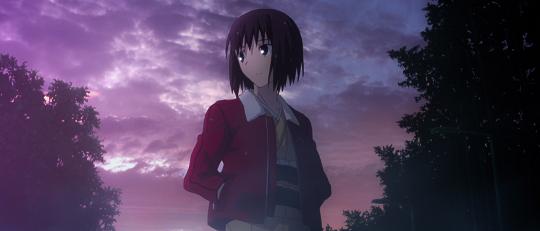
Kara no Kyoukai is a bit like the suit I use for job interviews. It’s not especially well worn, nor does it sit either end of the comfort scale, but by wearing it there are certain expectations. It seems that for ufotable, now the de-facto steward of all Type Moon’s animated properties, the same can be said. It has been almost four years since the last Kara no Kyoukai (Boundary of Emptiness) film was released, three if you count the punctuation mark that the OVA in the limited edition box-set represented. Since then of course the studio has put out the well-received Fate/Zero and is on track to release a new chapter in the Fate/stay night mythos.
like an appendix to a book, stuffed with obvious fan pleasing points of note
That contextualises where the studio sits with the release of Kara no Kyoukai: Mirai Fukin (Future Gospel), but doesn’t really adequately convey just how assured and confident this new movie’s execution is. There is a knowledge and appreciation of the characters that populate Kinoko Nasu’s work but also of the roles played by the location and themes underpinning them. It is still arrestingly beautiful and quietly unsettling that perhaps only an intrinsic understanding and time could produce.
Read the rest of this entry
A review of the Bayonetta: Bloody Fate anime movie
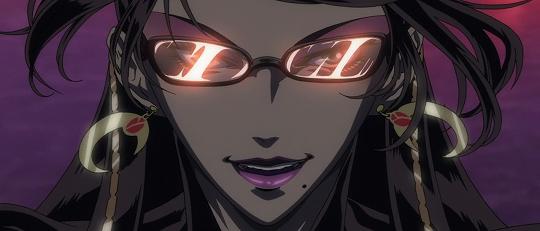
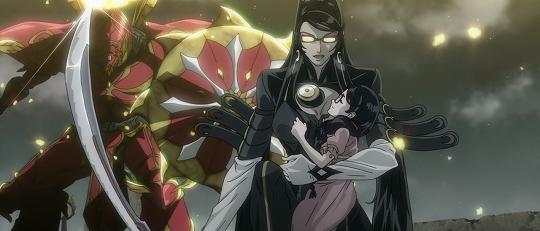
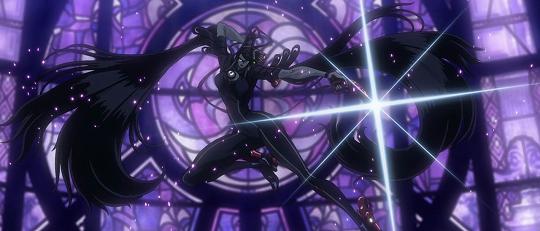
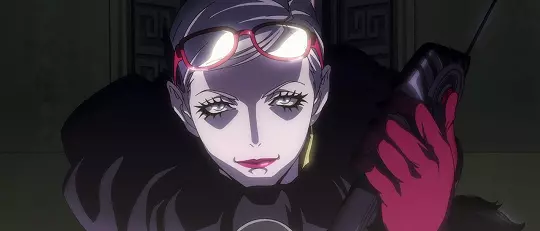
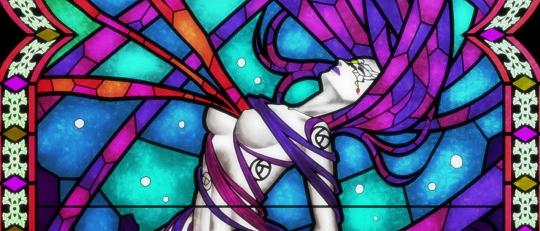
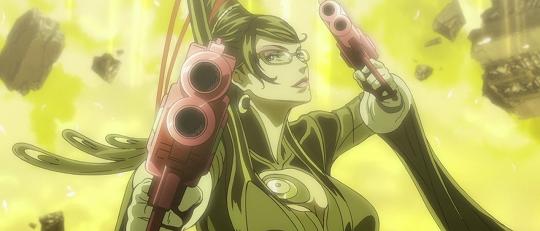
I’m not the best person to be objective about the Bayonetta anime movie, Bloody Fate, or anything to do with the franchise to be honest. The amount of time I spent on the first game was more extensive than any other I have ever played and I was halfway through a ridiculously difficult challenge (a Pure Platinum run) when either through circumstance or willpower I dragged myself away from it. I can’t look at the movie with fresh eyes and comment on the blatant ridiculousness of it all because for better or worse, it has lifted the game’s style, attitude and story directly from the first game.
How about a muscly tattooed guy in shades playing the organ?!
The former two of those points are where the meat of a debate is, the latter though will undoubtedly be the biggest issue for newcomers. The titular Bayonetta is a witch with guns strapped to her high-heels and clothing made out of her own hair who fights against masked angels. Having been awoken from a centuries long slumber without any knowledge of her life before her torpor, she is strangely drawn to the reclusive leader of a religious order while being pursued by the tenacious journalist Luka. That’s the set up, the execution involves a motorcycle chase, a chainsaw three times longer than Bayonetta is tall and a whole lot of incongruous, barely censored nudity.
Just like the game then.
Read the rest of this entry












